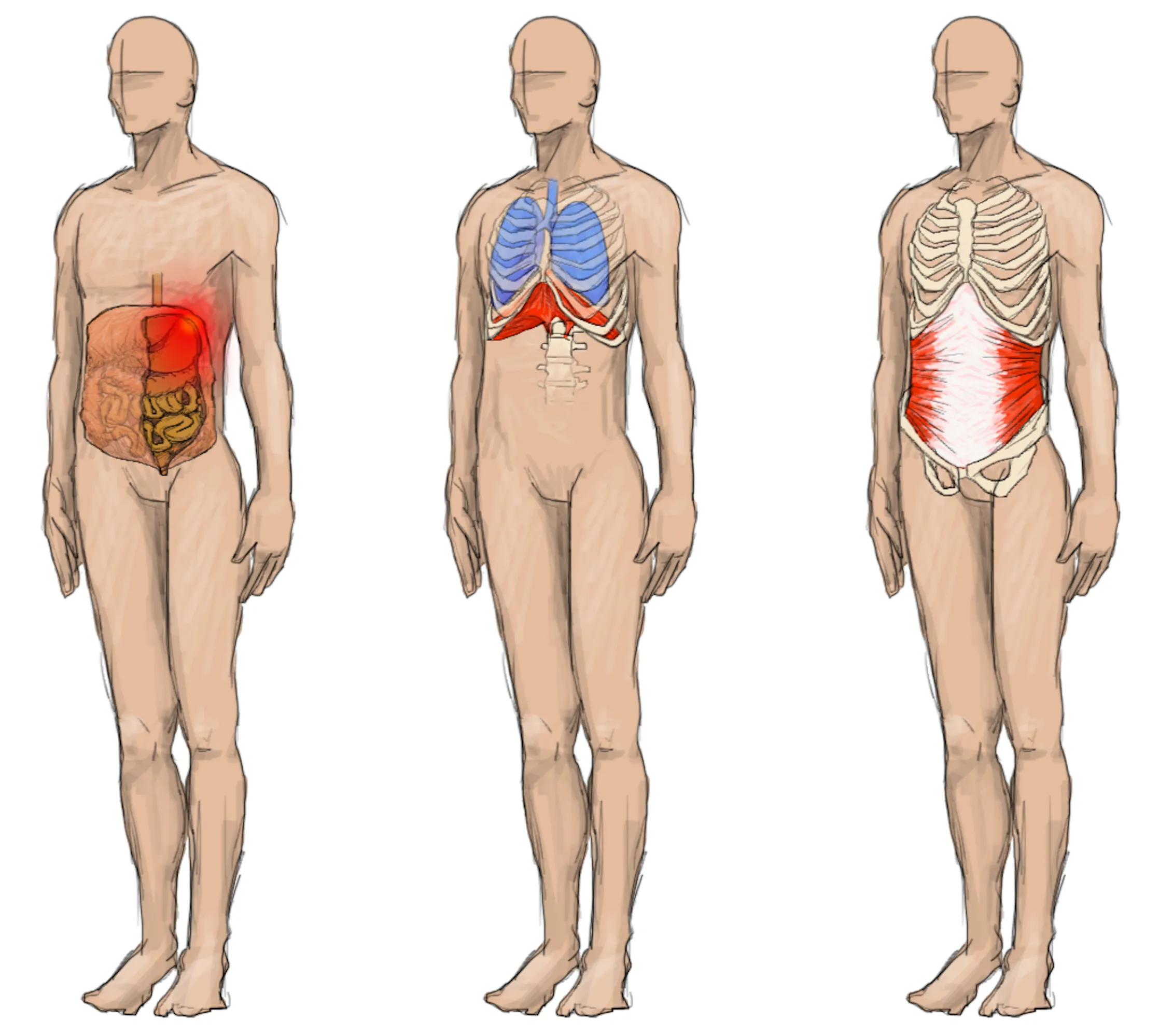Where does a stitch come from?
Published by Adrien,
Source: The Conversation under Creative Commons license
Other Languages: FR, DE, ES, PT
Source: The Conversation under Creative Commons license
Other Languages: FR, DE, ES, PT
Follow us on Google News (click on ☆)
Imagine you're running with your friends in a park. You're feeling good, in shape, and smiling. But suddenly, you feel a sharp pain in your right side, just below your ribs. It's hard to breathe, you slow down, and eventually stop. You've just got a stitch.

From left to right:
(1) The parietal peritoneum, which covers the organs in the abdomen. Its irritation is believed to cause the stitch.
(2) The diaphragm muscle (in red, below the lungs). It is the main muscle involved in inhalation.
(3) The transverse muscle.
Created by the authors
You should know that this phenomenon is very common among swimmers and runners, especially people under the age of 20. But what exactly is a stitch? And how can it be prevented?
Although very frequent, the stitch has been a relatively understudied subject until recently. Scientists haven't yet identified the exact cause of this pain, but one hypothesis seems more likely than others.
Is the peritoneum to blame?
This hypothesis is irritation of the peritoneum, a thin membrane that lines the inner wall of the abdomen. The peritoneum consists of two layers that protect the organs in the belly. A fluid between these two layers prevents friction.
During physical exertion, like running, the quantity and viscosity of this fluid changes, making it less effective. Additionally, because of the movements involved in such activities, these two layers can slightly rub against each other. This gentle friction could cause irritation, which is thought to trigger the pain of a stitch. In children, the surface area of the peritoneum is proportionally larger compared to adults, which might explain the higher frequency of stitches among children.
Repetitive torso movements, especially up-and-down motions and rotations, promote friction between the two layers of the peritoneum, particularly when the torso is extended. This explains why stitches are common during running, swimming, and even horseback riding, but less frequent in cycling, where movement is more restricted.
Furthermore, stitches are sometimes accompanied by sharp shoulder pain when irritation reaches the area of the peritoneum under the diaphragm. It's believed that the rubbing of the peritoneum irritates the phrenic nerve (which controls the diaphragm). The phrenic nerve also passes through the shoulder, and the stitch might cause what's known as "referred pain"—that is, pain perceived in one area of the body originating from another location. In this case, irritation of the peritoneum beneath the diaphragm could cause shoulder pain via the phrenic nerve.
So, how can we avoid stitches?
The first solution is to avoid physical activity right after eating too much. A swollen stomach might compress the two layers of the peritoneum, increasing friction and thus pain. The second solution is to train core stability, especially the transverse abdominis, a deep abdominal muscle, with exercises like planking.
And if, despite these efforts, you still get a stitch, unfortunately, there's no miracle cure. You can try to breathe deeply or press on the affected area—it may help.
The best solution to alleviate a stitch is to slow down or stop the activity and wait for the pain to subside.